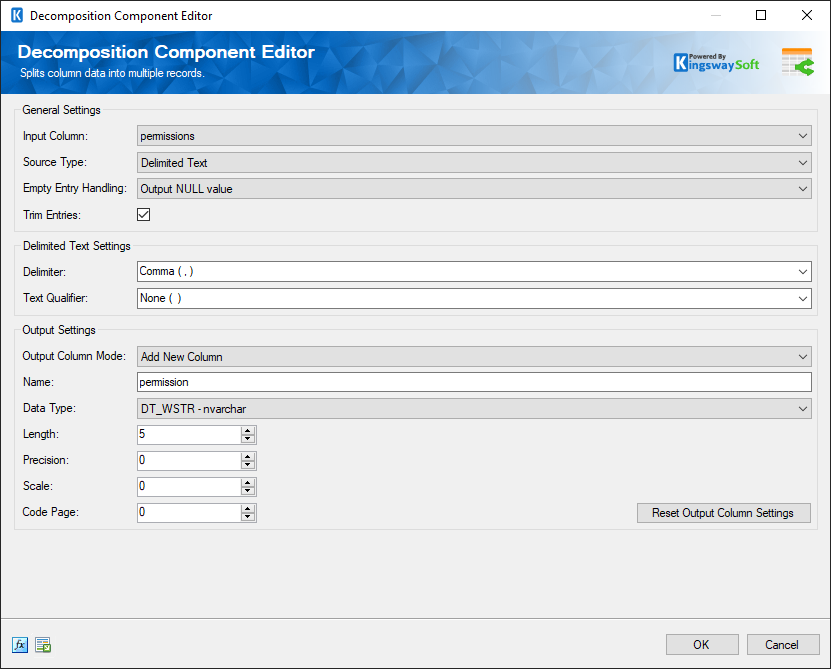Decomposition Component
via SSIS Productivity Pack
Split the input values into multiple rows with the Decomposition Component, found within the SSIS Productivity Pack.
Download Purchase
What other productivity tools are available?
Click here for more solutions.
The Decomposition Component is a data flow transformation component that can be used to split input values into multiple rows while duplicating the values of other columns.
Developer Productivity Tools
Decomposition Component
Decomposition Component, part of the SSIS Productivity Pack, offer developers three source types including Delimited Text, JSON Array, and, XML Elements.
With the Delimited Text, developers can choose the delimiter as well as the text qualifier. With the XML Elements, developers can select the Root Element Name, Child Element Name, and, the Output Column Settings.

Decomposition Component
Decomposition is a powerful yet easy-to-use data transformation tool designed to split values from a single input column into multiple rows, while duplicating the remaining column values. Built on Microsoft SQL Server Integration Services (SSIS), a high-performance and flexible ETL platform, it allows developers to efficiently reshape and normalize data using the skills and technologies they already know. Its intuitive drag-and-drop interface makes it quick to configure, enabling complex data transformations in just minutes.
The Decomposition Component is included in the Conversion Components and Productivity Pack, a comprehensive collection of premium and specialized SSIS components designed to boost development productivity. Alongside the Decomposition Component, the Productivity Pack offers an extensive set of tools for data transformation, conversion, and connectivity to help streamline ETL workflows.
See our full product offerings for more information.
More Conversion Components
Our Data Conversion Components make it easy to integrate with different services within the ETL process. Each component available has been specifically developed to expand and enhance data migration and integration processes. In addition to Decomposition Component, the Conversion Components include:



